How to prevent overuse cycling injuries
As we head into summer here in the high country, we at Vail-Summit Orthopaedics, like you, will start heading out on our bikes. Unlike our friends who live at lower elevations, we can not ride outside all year. With a short riding season we are tempted to get all of our fitness in a short period. This sudden increase in our time riding and the repetitive nature of cycling makes us susceptible to overuse injuries. An overuse injury will certainly detract from your enjoyment on the bike, but it also threatens to shorten or end your season as well.
Step 1: Make sure you have proper bike fit
If you plan on riding more than an hour or two a week, I strongly recommend having a professional bike fit. You can get a fit that is close through trial and error, but being off a few millimeters can make the difference between pain and comfort. As we age we tend to loose range of motion in our joints and low back, this can make a correct fit even more important. The fundamental concept of a bike fit is to fit the bike to the rider not the other way around. This may mean purchasing some new components to get the fit you want, but it is a worthwhile investment.
A bike fit optimizes your contact with the bike, which occurs at your pedals, saddle and handle bars. The position of these points and the overall shape of you and your bike determines how you are positioned on the bike. Here are some general guidelines related to a bike fit, but in no way can this article substitute for a job done by a cycling professional.
Your bike seat should be level in order to support your full body weight and allow you to move around on the seat. Too much upward tilt can result in pressure points. Too much downward tilt can make you slide forward while riding and put too much pressure on your arms, hands and knees.
A seat position that is too high or low or far forward or back can often result in knee pain. A seat that is too high will cause pain in the back of the knee. A seat too high will also cause your hips to rock side to side, which may cause discomfort on the saddle. A seat that is too low or too far forward may cause pain in the front of the knee.
The length of your stem will give you either more reach or more of an upright feel. If the handlebars are too high, too low, too close, or too far away, you may have neck, shoulder, back, and hand pain. You should be able to comfortably use all the positions on the handlebars and bend your elbows while riding. Riding a bike that is too long for you or having handlebars that are too low can result in neck pain.
How you ride is important too. The amount of power you put through each stroke can cause issues. Using too high a gear, or climbing steep grades with a single speed can put excessive force on the knees and feet resulting in pain. If you are prone to knee pain, use a gear that allows you to pedal with a cadence between 80 to 100 revolutions per minute. You should ride with your elbows slightly bent, not straight or locked, relax your shoulders and do not wrestle with the bike, even when working hard. Maintaining bent elbows and keeping the arms and shoulders relaxed helps absorb the bumps in the road. Change positions frequently, get out of the saddle and stand on your pedals every few minutes. It is also helpful to frequently change your hand positions on the handlebars.
Step 2: Increase your efforts on the bike gradually
As tempted as we are to start our riding season where we left off last fall, we should give our bodies time to get back into cycling. You can start your season during winter by riding indoors on a trainer or at the gym. There are incredibly talented trainers in the valley to help with this. If you have waited until now to ride, the concepts of training remain the same. You need to strike a balance between creating enough of a stimulus to cause an adaptation in your fitness without pushing so hard that you become injured. Start with an effort that is challenging and but not painful. Increase your time on the bike gradually, about 10% per week is a guideline. Cycling can be challenging but it should not cause pain in your joints. If you are developing pain in your back, tendons or joints it is time to get help, you may be increasing your time too quickly or you may need to have your bike fit evaluated.
For those who are interested in joining a race, most training experts recommend starting a training program several months in advance of a bike race. Try and get on your bike three to five times a week and be sure to include one longer ride each week, preferably one to three hours.
We at Vail-Summit Orthopaedics look forward to sharing our roads and trails with all of you with the hope that we all have a fun, injury free and safe riding season.
Dr. Greg Poulter is a Spine Surgeon with Vail-Summit Orthopaedics. He specializes in Advanced Adult & Pediatric Spine Surgery, and Orthopaedic Trauma and is fellowship trained in orthopaedic spine care. Dr. Poulter and his family reside in the Vail Valley. Be sure to visit www.vsortho.com for more patient information on how to treat common conditions and injuries.
Step 1: Make sure you have proper bike fit
If you plan on riding more than an hour or two a week, I strongly recommend having a professional bike fit. You can get a fit that is close through trial and error, but being off a few millimeters can make the difference between pain and comfort. As we age we tend to loose range of motion in our joints and low back, this can make a correct fit even more important. The fundamental concept of a bike fit is to fit the bike to the rider not the other way around. This may mean purchasing some new components to get the fit you want, but it is a worthwhile investment.
A bike fit optimizes your contact with the bike, which occurs at your pedals, saddle and handle bars. The position of these points and the overall shape of you and your bike determines how you are positioned on the bike. Here are some general guidelines related to a bike fit, but in no way can this article substitute for a job done by a cycling professional.
Your bike seat should be level in order to support your full body weight and allow you to move around on the seat. Too much upward tilt can result in pressure points. Too much downward tilt can make you slide forward while riding and put too much pressure on your arms, hands and knees.
A seat position that is too high or low or far forward or back can often result in knee pain. A seat that is too high will cause pain in the back of the knee. A seat too high will also cause your hips to rock side to side, which may cause discomfort on the saddle. A seat that is too low or too far forward may cause pain in the front of the knee.
The length of your stem will give you either more reach or more of an upright feel. If the handlebars are too high, too low, too close, or too far away, you may have neck, shoulder, back, and hand pain. You should be able to comfortably use all the positions on the handlebars and bend your elbows while riding. Riding a bike that is too long for you or having handlebars that are too low can result in neck pain.
How you ride is important too. The amount of power you put through each stroke can cause issues. Using too high a gear, or climbing steep grades with a single speed can put excessive force on the knees and feet resulting in pain. If you are prone to knee pain, use a gear that allows you to pedal with a cadence between 80 to 100 revolutions per minute. You should ride with your elbows slightly bent, not straight or locked, relax your shoulders and do not wrestle with the bike, even when working hard. Maintaining bent elbows and keeping the arms and shoulders relaxed helps absorb the bumps in the road. Change positions frequently, get out of the saddle and stand on your pedals every few minutes. It is also helpful to frequently change your hand positions on the handlebars.
Step 2: Increase your efforts on the bike gradually
As tempted as we are to start our riding season where we left off last fall, we should give our bodies time to get back into cycling. You can start your season during winter by riding indoors on a trainer or at the gym. There are incredibly talented trainers in the valley to help with this. If you have waited until now to ride, the concepts of training remain the same. You need to strike a balance between creating enough of a stimulus to cause an adaptation in your fitness without pushing so hard that you become injured. Start with an effort that is challenging and but not painful. Increase your time on the bike gradually, about 10% per week is a guideline. Cycling can be challenging but it should not cause pain in your joints. If you are developing pain in your back, tendons or joints it is time to get help, you may be increasing your time too quickly or you may need to have your bike fit evaluated.
For those who are interested in joining a race, most training experts recommend starting a training program several months in advance of a bike race. Try and get on your bike three to five times a week and be sure to include one longer ride each week, preferably one to three hours.
We at Vail-Summit Orthopaedics look forward to sharing our roads and trails with all of you with the hope that we all have a fun, injury free and safe riding season.
Dr. Greg Poulter is a Spine Surgeon with Vail-Summit Orthopaedics. He specializes in Advanced Adult & Pediatric Spine Surgery, and Orthopaedic Trauma and is fellowship trained in orthopaedic spine care. Dr. Poulter and his family reside in the Vail Valley. Be sure to visit www.vsortho.com for more patient information on how to treat common conditions and injuries.
![]() 0 Comments on "How to prevent overuse cycling injuries "
0 Comments on "How to prevent overuse cycling injuries "
Be the first to comment below.



 Vail Town Council to weigh new plan to redevelop T...
Vail Town Council to weigh new plan to redevelop T...  All about indexes
All about indexes  Transforming your social security into a winning r...
Transforming your social security into a winning r... 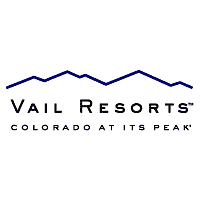 Pass sales, real estate transactions, revenues inc...
Pass sales, real estate transactions, revenues inc...  Vail Valley native with passion for Biophilic inte...
Vail Valley native with passion for Biophilic inte... 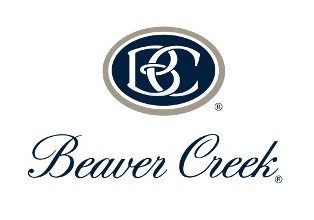 Beaver Creek starts work on new summer activities
Beaver Creek starts work on new summer activities  Land Trust, ECO Trails, Vail Resorts team up to cl...
Land Trust, ECO Trails, Vail Resorts team up to cl... 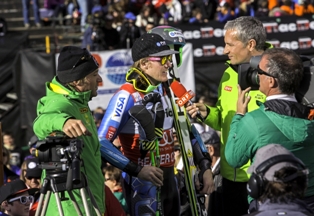 EUROVISION named Host Broadcaster for 2015 World A...
EUROVISION named Host Broadcaster for 2015 World A...  Vail Resorts brings back Lindsey Vonn's 'School of...
Vail Resorts brings back Lindsey Vonn's 'School of... 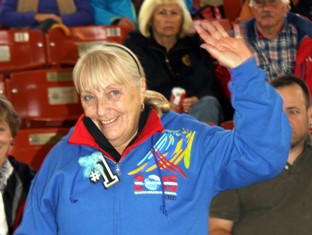 Hundreds turn out for 2015 World Championships vol...
Hundreds turn out for 2015 World Championships vol... 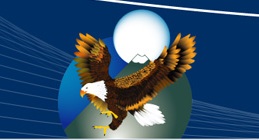 Eagle County Senior Health Expo and 9th Annual Hea...
Eagle County Senior Health Expo and 9th Annual Hea... 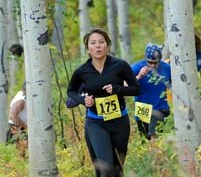 Final race of Vail Mountain Trail Running Series s...
Final race of Vail Mountain Trail Running Series s...  Before you write your will ...
Before you write your will ... 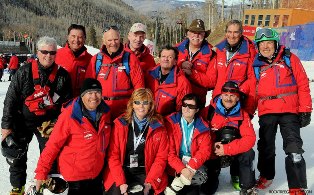 2015 World Ski Championships volunteer recruitment...
2015 World Ski Championships volunteer recruitment...  Ascent Sotheby’s International Realty in Vail an...
Ascent Sotheby’s International Realty in Vail an...  CDOT outlines road closures for local stages of US...
CDOT outlines road closures for local stages of US...  Italian artist creates unique trophies for Vail, B...
Italian artist creates unique trophies for Vail, B... 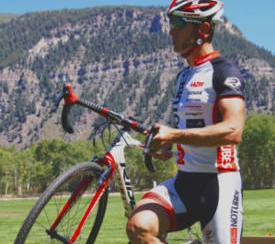 Vail Recreation District once again hosting Jake W...
Vail Recreation District once again hosting Jake W... 

